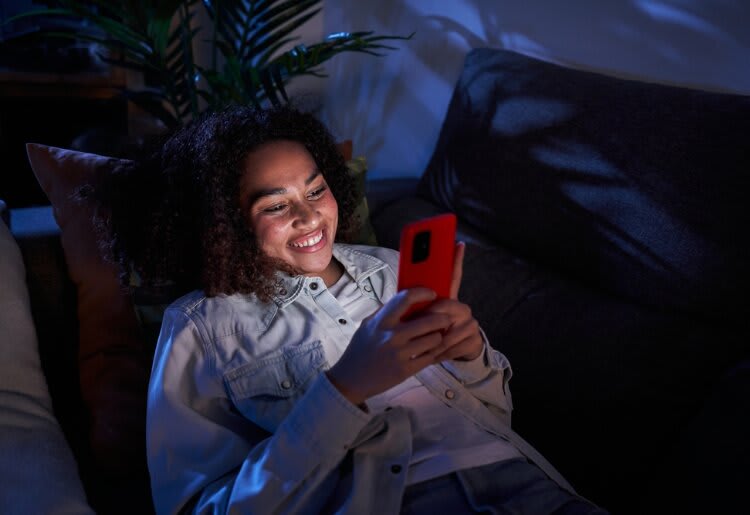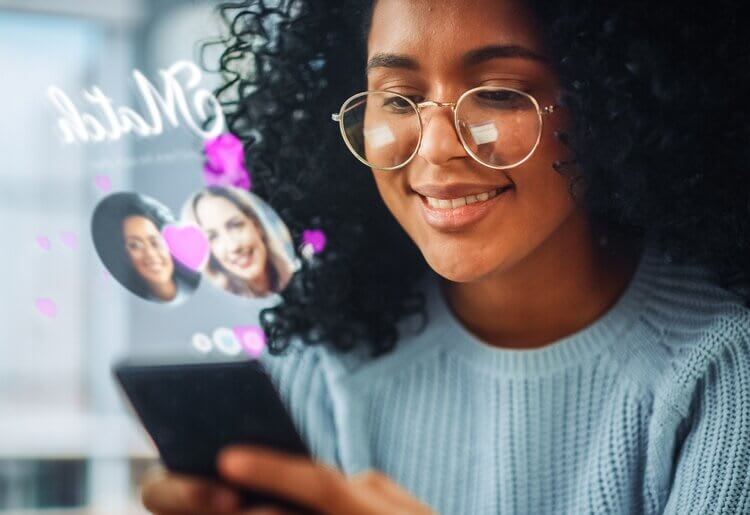From the days of online dating sites to the revolution of swiping, the evolution of relationships intertwines psychology, innovation, and societal shifts.
Drawing from my experience as a dating coach, I'll explore the psychology behind swipe-based decision-making and discuss how our approach to love has transformed amidst technological advancements.
» Are you looking to find love? Try eharmony.
From Dating to Swiping
The first dating site was match.com (now Match), launched around 1994. You needed a desktop computer to use it, and people mostly talked through emails or in chat rooms.
There was thoughtful effort behind each interaction due to the nature of the technology and profile requirements. You had to work to interact with others, even setting a date to be available online simultaneously.
Then came Tinder, which was all about quick swiping entirely on your mobile phone. Once you set up your profile, you can swiftly browse through potential matches with a simple swipe.
Swipe Left, Swipe Right—But Why?
The swipe left/right mentality is a quick decision-making process that follows a simple premise: Swipe right if you like what you see, and swipe left if you aren't interested in connecting.
But why is the right side often linked with correct choices? Our tendency to pick that direction without much thought is shaped by:
- Biological influences: People generally associate their dominant side with positive qualities like goodness and honesty. With 70-95% of the population being right-handed, this results in a widespread preference for the right side.
- Psychological impacts: Around 66% of people worldwide drive on the right side of the road, a choice that may be influenced by the fact that most people are right-handed. This spatial awareness can also affect your inclination toward the right direction.
- Right-sided bias: Our right brain hemisphere manages global attention, while the left focuses on specific details. This could mean we naturally pay more attention to things when they're on our right side.
» Want more dating app options? Check out these five Zoosk alternatives.

The Rise of Swipe Left/Right: From Novelty to Norm
Apps like Tinder gamified dating by adding rewards, risks, and features like swiping to find a match to the mix. This way of uncovering love seemed more like entertainment for many people, having provided a novel alternative when it first appeared.
Online dating was still considered taboo back in 2012 when Tinder was launched. People kept their profiles secret or felt embarrassed saying they met someone online.
Over time, the stigma faded away as more people started using the internet and smartphones for many aspects of their lives. Dating through apps became as normal as using social media and shopping online.
As people got more comfortable sharing their lives on the internet, using dating apps just became another way to connect with others in our digital world.
Swipe Culture: Good or Bad?
While swipe culture has made dating more accessible, it also makes it more challenging to build deep, safe, and varied relationships. Here's my take on its significant impacts:
- Instant choices: Swipe culture encourages us to make quick decisions based on just a photo. It's a shift towards prioritizing immediate attraction, often missing the depth of real-life interactions.
- Connection vs. convenience: These apps have been especially useful for those who find social interactions challenging. However, I've observed a growing tendency to rely more on digital connections.
- Measuring safety and truth: With the emphasis on physical appearance, it's become harder to gauge authenticity on apps. I've had clients ignore first date red flags just because of a charming profile picture.
- Transforming dating rhythms: How we plan dates, the depth of our conversations before meeting, and our commitment to individual connections have all changed. It's a faster-paced dating environment with less emphasis on long-term interactions and more on instant gratification.
- The filter bubble: Relying on app filters can narrow our dating pool, limiting us from meeting a diverse range of people. It contrasts with the unpredictable yet often rewarding nature of traditional dating.
Still, I think the real issue is how we interact with the technology rather than the technology itself. When using these apps, focus on balancing the convenience of swipe culture and the richness of more meaningful connections by engaging in deeper conversations and offering to meet up for an in-person date as soon as possible.
Positives of Swipe Apps
Swipe apps make it easier to communicate with others, offering an accessible way for socially inclined individuals to connect. It's a helpful tool for those with social anxiety, shyness, or busy schedules.
It can also help youngsters or newcomers dip their toes into the dating pool. They can avoid feeling overwhelmed or pressured to meet strangers for the first time.
If mainstream apps don't fit your requirements, niche apps are a convenient way to look for specific connections in your area.
When used appropriately, swipe apps encourage intentional searches and diverse dating experiences.

Embrace the Future of Digital Connections
The shift from traditional online dating to swipe culture significantly changed relationship-building. As a dating coach, I've seen how this evolution impacts not only partner-seeking but also our interaction with technology.
Swipe culture offers convenience but challenges the depth and safety of our connections. The key is balancing ease with meaningful relationships. Adapting to this new dating landscape involves making informed choices and embracing diverse experiences to find love in this age of the swipe-left/swipe-right mentality.
» Discover more uses for your dating app.
